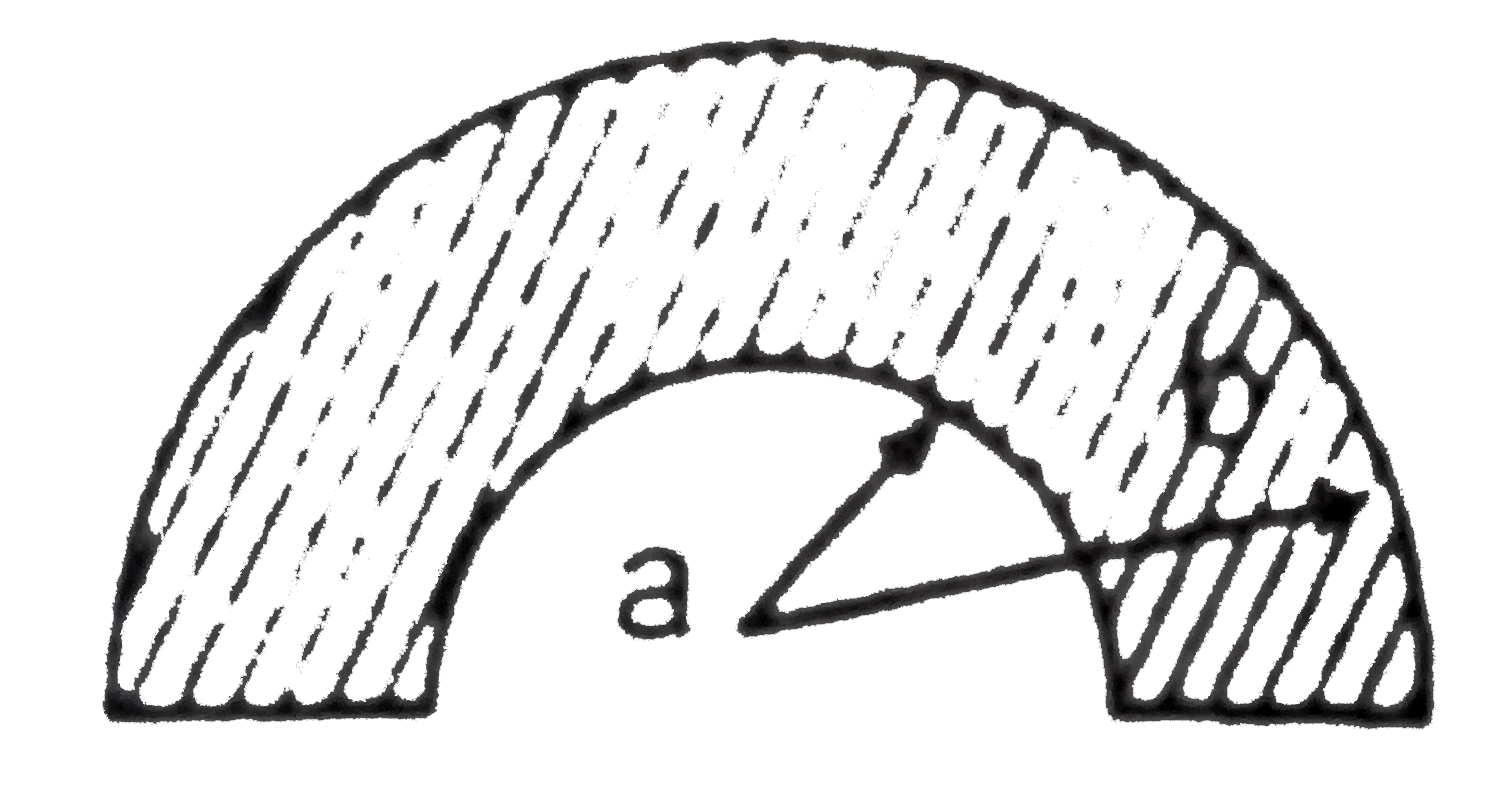Two concentric spheres kept in air have radii R and r. They have similar charge and equal surface charge density σ. The electrical potential at their common centre is (where, ε0= permittivity of free space)
σ(R+r)ε0
σ(R−r)ε0
σ(R+r)2ε0
σ(R+r)4ε0
The correct Answer is:A
To solve the problem of finding the electrical potential at the common center of two concentric spheres with radii R and r, and equal surface charge density σ, we can follow these steps:
Step 1: Understand the Configuration
We have two concentric spheres:
- The inner sphere has radius r and charge Q1.
- The outer sphere has radius R and charge Q2.
Both spheres have the same surface charge density σ.
Step 2: Relate Charge and Surface Charge Density
The surface charge density σ is defined as:
σ=QA
where A is the surface area of the sphere. The surface area of a sphere is given by 4πR2.
For the inner sphere:
Q1=σ⋅4πr2
For the outer sphere:
Q2=σ⋅4πR2
Step 3: Calculate the Electric Potential
The electric potential V at a distance d from a charged sphere is given by:
V=14πϵ0Qd
For the inner sphere (at the center):
Since we are at the center of the inner sphere, the potential due to the inner sphere is:
Vr=14πϵ0Q1r=14πϵ0⋅σ⋅4πr2r=σrϵ0
For the outer sphere (at the center):
The potential due to the outer sphere at the center is:
VR=14πϵ0Q2R=14πϵ0⋅σ⋅4πR2R=σRϵ0
Step 4: Total Potential at the Center
The total potential V0 at the common center of the spheres is the sum of the potentials due to both spheres:
V0=Vr+VR=σrϵ0+σRϵ0
Step 5: Simplifying the Expression
Combining the terms, we get:
V0=σ(r+R)ϵ0
Final Answer
Thus, the electrical potential at their common center is:
V0=σ(R+r)ϵ0
---
We have two concentric spheres:
- The inner sphere has radius r and charge Q1.
- The outer sphere has radius R and charge Q2.
Both spheres have the same surface charge density σ.
The surface charge density σ is defined as:
σ=QA
where A is the surface area of the sphere. The surface area of a sphere is given by 4πR2.
Q1=σ⋅4πr2
Q2=σ⋅4πR2
The electric potential V at a distance d from a charged sphere is given by:
V=14πϵ0Qd
Since we are at the center of the inner sphere, the potential due to the inner sphere is:
Vr=14πϵ0Q1r=14πϵ0⋅σ⋅4πr2r=σrϵ0
The potential due to the outer sphere at the center is:
VR=14πϵ0Q2R=14πϵ0⋅σ⋅4πR2R=σRϵ0
The total potential V0 at the common center of the spheres is the sum of the potentials due to both spheres:
V0=Vr+VR=σrϵ0+σRϵ0
Combining the terms, we get:
V0=σ(r+R)ϵ0
Thus, the electrical potential at their common center is:
V0=σ(R+r)ϵ0
Topper's Solved these Questions
- ELECTROSTATIC POTENTIAL AND CAPACITORSBOOK - DC PANDEY ENGLISHCHAPTER - ELECTROSTATIC POTENTIAL AND CAPACITORSEXERCISE - (B) Chapter exercises
17 Videos
- ELECTROMAGNETIC WAVESBOOK - DC PANDEY ENGLISHCHAPTER - ELECTROMAGNETIC WAVESEXERCISE - Sec C
22 Videos
- ELECTROSTATICSBOOK - DC PANDEY ENGLISHCHAPTER - ELECTROSTATICSEXERCISE - Medical entrances gallery
37 Videos
Similar Questions
Two concentric spheres of radii R and r have similar charges with equal surface charge densities (σ). The electric potential at their common centre is
View SolutionTwo connectric spheres of radii R and r have similar charges with equal surface charge densities (sigam). The electric potential at their common centre is
View SolutionTwo charged spheres of radii R1andR2 having equal surface charge density. The ratio of their potential is
View SolutionA charge Q is distributed over two concentric hollow spheres of radii r and R(>r) such that the surface charge densities are equal. Find the potential at the common centre.
View SolutionA charge Q is distributed over two concentric hollow spheres of radii r and R(>r) such that the surface charge densities are equal. Find the potential at the common centre.
View SolutionA charge Q is distributed over two concentric hollow spheres of radii r and R(>r) such that the surface charge densities are equal. Find the potential at the common centre.
View SolutionTwo concentric shells have masses M and m and their radii are R and r, respectively, where R>r. What is the gravitational potential at their common centre?
View SolutionA charge .q. is distrubuted over two concertric hollow conducting sphere of radii r and R (<r) such that their surface charge densite are equal. The potential at their common centre is
View SolutionTwo concentric conducting shells of radii R and 2R are having charges Q and -2Q respectively.In a region r
View SolutionA non-conducting semi circular disc (as shown in figure) has a uniform surface charge density σ. The ratio of electric field to electric potential at the centre of the disc will be

View Solution
